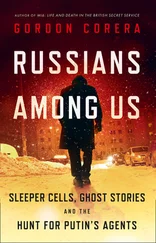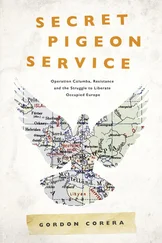Belgium, with its busy ports, was always likely to be a key staging post for an invasion of Britain. But MI14 was unconvinced by the reports that came in during the early months of the war. ‘Unfortunately, neither the agent in Belgium nor the agent in France inspire full confidence,’ the team noted of MI6’s offerings. ‘The agent in Belgium may be described as enthusiastic, as well as painstaking; his frequent reports are alarmist in tone (some of his prophecies have already been disproved), and he has provided very few identifications.’ Along with the French agent, the two ‘can only be classed as among the least reliable of our whole body of sources’.
A second source of intelligence for MI14 was new. Aerial reconnaissance was just emerging. From photographs taken at a height of 30,000 feet, Sanderson recalled, an interpreter in one case was able not only to see a football stadium on the ground but also provide a useful match commentary, reporting that during the interval of nine seconds between three photos, the team at the end closest to a gasworks was being severely pressed by the other side as the opposition moved the ball a good twenty-five yards forward. MI14’s specialist would use photos to count the number of barges at Channel ports and look for changes. But there were limits to what could be seen from the skies. Interpretation by analysts was often tricky and filled with ambiguity. Bad weather sometimes meant there were many days when no flights could be made. The irregular timing of reconnaissance missions also made it hard sometimes to know from the pictures obtained what was changing and why. Movements on land were harder to spot than those of ships, since they often took place at night. There was also the risk of reconnaissance planes being shot down.
Air reconnaissance and ‘special methods’ – a code for intercepts – might provide indications, but agents were the best means of reporting German intentions and identifying what the signs meant. There were at least fourteen ports that the Germans might use. Since August 1940, MI14 had been pressing MI6 forcibly to try and have agents placed in these ports with some means of communication, but so far it had failed to deliver. There were people in occupied Europe willing to help, and Dansey and MI6 were trying to drop or land agents into Europe to contact them, but the going was slow.
The biggest problem with human intelligence sources (other than the reliability of the source itself) was the delay before the information arrived in London. Getting agents in and out at the start of the war was difficult and dangerous. Radios were in their infancy and so intelligence often had to be smuggled out by hand, passing from courier to courier. This meant it could take months, and by the time it arrived an item of intelligence which might have once been valuable could be out of date. One MI6 officer complained that although he was receiving lots of reports from Belgium, the information ‘has been so old that they have become valueless’. The average time it took in the middle of the war for an agent’s report to reach MI6 was nearly a third of a year. This was frustrating to analysts in London hungry for intelligence to help inform their decisions and improve their understanding of the enemy’s capabilities.
In the summer of 1940, the Luftwaffe had begun its campaign to destroy Britain’s defences – first targeting the RAF itself and then, in what became known as the Blitz, the capital city and other targets. In Plymouth, Bert Woodman watched as incendiaries rained down on the city, anti-aircraft guns roared in response and tracers lit up the sky. As local pigeon supply officer and also an ARP warden, he found his pigeons in high demand, as police needed them in order to communicate when the telephone lines went down. The damage was fearful. ‘The bomber will always get through,’ pre-war Prime Minister Stanley Baldwin had warned, and for a while it was feared he might be right. As war approached, desperate ideas had been thrown around to stop raids at night, when it was much harder to spot incoming bombers, one serious idea being to floodlight the whole of southern England. Technical intelligence on Germany’s weapons – especially in the air – was vital.
MI6 as a whole was sceptical about pigeons as a method of gathering intelligence, but one person who worked at its headquarters would become Columba’s greatest champion as he struggled to combat Germany’s aerial power. He was not a spy but a scientist. When war began, Reginald Jones – usually known as R. V. Jones – was one of those impatient new men who would rise fast because he understood how much warfare had changed. Jones, from a middle-class background in South London, had by the age of seventeen built a radio set that could pick up transmissions from Australia. He was ambitious and difficult to work with, but he knew what he was doing.
As fears of invasion gripped the country, Jones was sent from the Air Ministry to MI6 as a scientific adviser in its Air Branch. His mission was to detect as early as possible any new German weapon that might change the course of the war. Panic had gripped the intelligence community when Hitler made a speech claiming he had a secret weapon against which no defence could stand. Jones was ordered to find out what this mysterious weapon might be. MI6 files were crammed with wild rumours of ‘death rays’. One inventor had been paid by MI6 to see if he could live up to his promise of developing such a ray, but his invention proved only useful for preserving fruit. Eventually, Jones asked for a new translation of Hitler’s speech that had started all the fuss. He discovered that the context of the word for weapon ( Waffe ) had been mistranslated; what Hitler was referring to was his ‘Luftwaffe’ or air force, against which no one could prevail. His inquiries though had taught him two lessons. First, the spies barely understood science. And second, the Germans knew the war in the air would be pivotal and were far ahead in utilizing the latest technology.
Jones found the old hands at Bomber Command complacently arguing that the use of their standard flying instruments along with a quick glance at the sky was enough to find targets. Jones did not make himself popular when he asked why, if this was the case, so many British bombers flew into hills during practice flights. And when German bombers began their onslaught, they seemed uncannily accurate – at least compared to the British – in finding their targets. What followed became known as ‘the Battle of the Beams’. Through a series of clues and intelligence leads, Jones was able to work out that the Germans had discovered a successful way of guiding their bombers by means of radio beams, which the planes were able to follow. Aged just twenty-eight, Jones found himself briefing Churchill in the Cabinet Room, rebutting hostile questioning from those round the table who doubted his ideas (including his former tutor, who was the Prime Minister’s scientific adviser). But he won the argument, and Britain began developing counter-measures by broadcasting their own beams to confuse the Germans’ navigation. At the same time, the development of radar helped the RAF scramble to meet the German threat as the Luftwaffe began their campaign against Britain. It was the start of a scientific cat-and-mouse game that would last throughout the war.
Jones’s forte was solving intelligence puzzles. In his hand would be a jigsaw piece that looked curious – say, a report of some kind of unusual German activity. First he had to find other pieces that might fit alongside it. Jones described an intelligence analyst as like a human with various senses – eyes in the sky in the form of aerial reconnaissance, ears listening at Bletchley, hands that could reach out from the Secret Service. When the ears heard an unusual noise, then the eyes would turn towards the sound to find out more. Jones was hungry for every snippet of intelligence that might help him understand German technology but, as with MI14, the sources were scant. Pigeons would play their part.
Читать дальше












